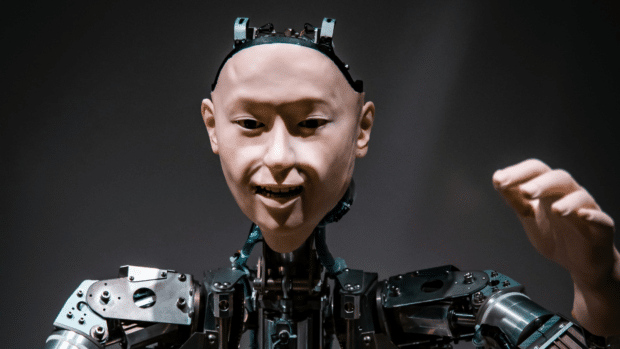
 Hohai University professor Liu Xiaofeng and his team have created a robot with realistic facial features to meet the need for authentic interactions between people and machines. (This is a free stock photo from Unsplash)
Hohai University professor Liu Xiaofeng and his team have created a robot with realistic facial features to meet the need for authentic interactions between people and machines. (This is a free stock photo from Unsplash)
Hohai University professor Liu Xiaofeng and his team created a robot with realistic facial features. They said this feature will meet the need for authentic interactions between people and machines. mega fortune
They published their findings in IEEE Transactions, which explain how their Action Units distinguish between “expression-related and expression–unrelated cues.”
This method allows for more facial movements, making robots more expressive, and these findings significantly enhanced “affective human-robot interaction.”
Article continues after this advertisement How does robotic facial features work?Despite the summer vacation, Liu Xiaofeng, a professor at Hohai University in east #China's Jiangsu Province, and his #research team have remained immersed in the lab, developing #humanoid #Robots with expressive #facial features. #science #Technology https://t.co/BUqBxjVjOL
— CGTN Tech (@CGTNTech) August 2, 2024University College London computer scientist Dr. Peter Bentley explained on ScienceFocus that making robots look like people is important in expanding adoption.
FEATURED STORIES TECHNOLOGY vivo launches V40 Lite with 5000mAh battery covered by 50-month warranty, starts at Php 13,999 TECHNOLOGY Galaxy Buds3 Pro: Delivering tailored sound wherever you go TECHNOLOGY Very mindful, very intuitive: ASUS’ most superior AI PC yet, the Zenbook S 14, empowers you to achieve moreMost people prefer robots to look familiar and want them to look human. However, robots with faces typically have uncanny or creepy facial features.
READ: Makati City backs Makatrix Robotics Team’s World Championship stint
Article continues after this advertisementSo Xiaofeng and his team developed robots and made them more natural with Action Units (AU). They kept expression-unrelated cues from shifting related ones, allowing bots to convey more realistic facial expressions.
Article continues after this advertisement“To preserve the integrity of AUs while mitigating identity interference, we leverage a latent facial attribute space to disentangle expression-related and expression–unrelated cues, employing solely the former for expression synthesis,” the researchers wrote.
Article continues after this advertisement“In the subsequent phase, we actualize an affective robot endowed with multifaceted degrees of freedom for facial movements, facilitating the embodiment of the synthesized fine-grained facial expressions.”
The researchers also created a specialized motor command mapping network that linked generated expression images and the robot’s realistic facial features.
Article continues after this advertisementREAD: AI, tech jobs easing out traditional work
This technology refined how robotic faces shifted according to their expressed emotions. As a result, Xiaofeng and his team believe it will improve “affective human-robot interaction.”
This study progresses China’s ambitions to lead robotic innovations. President Xi Jinping said it is necessary to “promote industrial innovation with scientific and technological innovation, actively cultivate strategic emerging industries such as new energy, new materials…”
Subscribe to our daily newsletter
Learn more about this robotic development in this Inquirer Tech article.mega fortune
TOPICS: China, Robots READ NEXT Saline solution shortage impacts hospitals worldwide The power of AI is in your hands with the OPPO Reno12 Series 5G EDITORS' PICK Marcos: PCG 'never alone' in mission to protect PH DILG identifies 38 hotspots ahead of 2025 polls UPDATES: 2025 elections precampaign stories LIVE UPDATES: Tropical Storm Kristine QC Mayor Belmonte highlights social services in State of City Address INQside Look with senatorial aspirant Tito Sotto MOST READ SC issues TRO vs Comelec resolution on dismissed public officials Tropical Storm Kristine slightly intensifies; Signal No. 2 in 5 areas Walang Pasok: Class suspensions on Wednesday, Oct. 23 LIVE UPDATES: Tropical Storm Kristine View comments